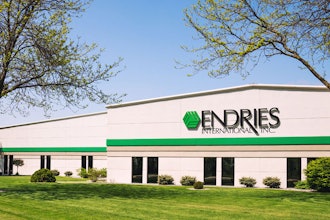
Industrial distributors face a complex set of risks that if not properly managed can result in poor financial performance, or in extreme cases jeopardize the business itself. These risks are managed by a number of people and functions in a distributor’s organization. Furthermore, purchasing departments are mindful of their supplier agreements, exposure to price shifts, and diversity of suppliers. The credit department is continually focused on concentrations of credit risk and financial impact of a single large customer failing to pay. The operations and finance team work together to oversee safety and loss controls most commonly associated with products, fleet operations and workers compensation.
Some of these risks are transferred through the use of traditional insurance programs. If insurance coverage is designed correctly and adequate limits are purchased, some of the biggest exposures are transferred to insurance company balance sheets. However, one of the most effective ways of transferring risk is through ‘contractual risk transfer,’ not insurance.
Free Whitepaper: Choosing the Best Path to Better Pricing
‘Non-insurance transfer’ is often accomplished in the following contracts or agreements:
- Leases
- Vendor/Supplier Agreements
- Customer Agreements
The contracts above are just some of the many agreements that an industrial distributor enters into that can transfer risk from the organization, but more problematically to the organization if not properly managed. It may be helpful to classify the two most common methods of transferring risk to others as ‘Door #1’ and ‘Door #2,’ as described below.
DOOR #1: HOLD-HARMLESS/INDEMNITY
The most common method of transferring this risk is through Indemnity/Hold Harmless Agreements. An Indemnity Agreement is a non-insurance transfer. It transfers responsibility to pay for another entity’s negligence. The indemnity is often unlimited and can go beyond insurance coverage that may be available. Indemnity Agreements come in three forms:
- Broad Form - Indemnifies a party even for that party’s sole negligence
- Intermediate Form – Indemnifies a party for its own negligence except if that party is solely negligent
- Limited Form – Does not indemnify a party for its negligence
These three forms of indemnity above are dramatically different in their effectiveness. When transferring risk from your organization, Broad Form is the most desirable, with Intermediate Form being more common. Limited Form, while being quite common, does not transfer risk in a meaningful way. Understanding these three forms of indemnity and your ability to negotiate with the other parties can be very valuable. Knowledge of these three structures is powerful in a negotiation.
DOOR #2: ADDITIONAL INSUREDS
‘Door #2’ is accessed by obtaining coverage from someone else’s insurance program. This is accomplished by being added as an Additional Insured on their insurance policy. Additional Insured status has the same objective as indemnification, but these are different paths to a common objective. Being added as an Additional Insured on someone else’s insurance policy allows you to go directly their insurance policy to obtain coverage, most commonly their general liability and umbrella liability coverages. However, coverage is limited to the scope of the work in terms of that policy’s Additional Insured terms. There are a number of common pitfalls with Additional Insured Endorsements, including whether they are provided on a Primary /Non-Contributory Basis. Because Additional Insured Coverage comes in many shapes and sizes, you should require being added as Additional Insured to include:
- Coverage for your negligence
- Coverage on a Primary/Non-Contributory Basis
Failure to be added on a Primary/Non-Contributory Basis could mean that your insurance policy and even your own deductibles will be required to share in any loss together with the program where you have been added as an Additional Insured. Obtaining Certificates of Insurance from your business partners that specifically detail that these coverage terms are provided to you is critical.
The provisions described above are included in a vast variety of contracts. These terms are often overlooked, resulting in industrial distributors taking on risk where they may be able to avoid it and also missing opportunities to transfer risk. While many companies think of their major contracts, some areas that are often overlooked include:
- Equipment Rental Agreements
- Temporary Services Agreements
- Independent Contactor Agreements
- Purchase Orders
In the event of a large claim, distributors are surprised and frustrated to learn that these simple and often overlooked ‘contracts’ contain risk transfer provisions that should have been changed or deleted. For these reasons, the authority to sign contracts, purchase orders and other agreements should be closely controlled. Your insurance broker should be a part of reviewing the provisions discussed above.
Insurance broker’s reviews should not only include these provisions, but assurances that your insurance policies properly meet the contractual requirements as well as many insurance requirements that are often included in these agreements. Establishing a regular procedure for reviewing contracts that has the insurance broker as a critical step in the process is a best practice.
Bill Selman is a Vice President at The Graham Company, and he can be contacted at [email protected].























